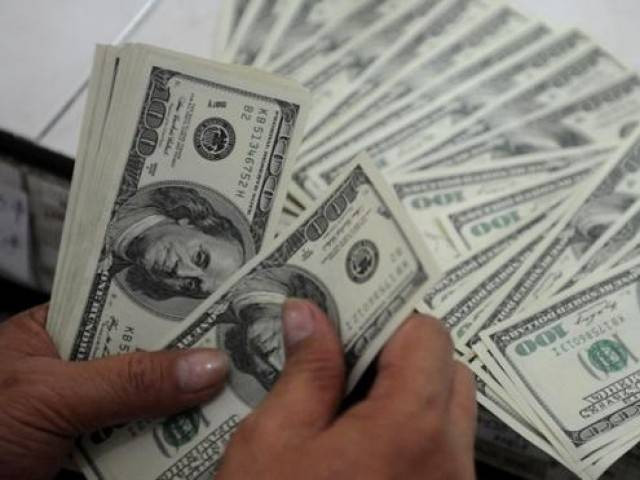Foreign reserves likely to increase by $1.5b
Report sees support from improvement in remittances, exports

Pakistan’s foreign currency reserves are anticipated to increase by $1.5 billion to $13.7 billion by June 30, 2021, with a notable improvement in receipt of workers’ remittances and export earnings, according to AHL Research.
“Pakistan will be relying on financing from the International Monetary Fund (IMF) and bilateral partners to meet its external debt requirements in FY21,” AHL Research analyst Sana Tawfik said in a commentary on Pakistan’s economy.
The improvement in foreign currency reserves will, however, not extend all-out support to the rupee this time around mainly due to likely surge in imports.
Accordingly, the rupee is expected to return to a downward trend and touch Rs161 against the US dollar by the end of December 2020 and Rs165 by the end of current fiscal year on June 30, 2021.
The rupee enjoyed a historic rally, appreciating by 6% in the past 20 consecutive working days and standing at an eight-month high at Rs158.48 against the US dollar in the interbank market on Wednesday, it was learnt. Tawfik predicted that imports were estimated to increase by 2% and exports and remittances by 3% each during FY21.
With this, the remittances are estimated to improve to $24 billion during the year compared to $23.10 billion in the previous fiscal year.
The growth in external economic indicators will turn the current account balance into a deficit of $2.5 billion for the full year (FY21) compared to a 17-year high surplus in the first quarter (July-September).
“Global economy continues to face turmoil in 2020, but we remain largely optimistic in our outlook for Pakistan’s external account, given continued attempts to find a solution to the dwindling trade position and continued inflow of remittances,” she added. The anticipated improvement in the national economy, particularly on the external front, would not be an easy journey during the Covid-19 pandemic. Economic managers have to remain focused to take appropriate measures accordingly with the passage of time.
“We expect exports of goods to improve by 3% year-on-year to $23 billion in FY21. This will hugely depend on trading partners starting their rehabilitation phase more robustly,” Tawfik said, adding, “With the current pandemic situation, Pakistani exporters should focus more on catering to demand for medical instruments, health clothing, pharmaceutical products, bed linen, towels and simple garments and clothing.”
“Exporters can also benefit from rules relaxation and rising prices of food items, vegetables and fruits in the EU once supply disruptions and logistic issues are resolved globally.”
Workers’ remittances so far have been stronger than expected. “In the short term, we can expect the momentum of $2 billion (a month) to continue till December 2020. As the year unfolds, we expect remittances flow to weaken with international economies returning to normalcy,” the analyst estimated.
She said, “However, seasonal uptick such as in Ramazan is likely to support the inflows. In our opinion, the declining trend in remittances will have adverse repercussions for the economy, not to forget that our current account stability is heavily reliant on it.
“A dent on remittances means the government will have to borrow more externally to keep foreign exchange reserves intact.”
The current account is expected to turn red and post a deficit of $2.5 billion in FY21, with a 2% increase in the quantum of imports and 3% increase each in exports and remittances.
Moreover, the financial account is expected to show improvement on account of hot money flow into debt markets. Debt moratorium by G20 countries till December 2020 (recently extended up to June 2021 for which Pakistan has yet to officially apply) has provided a relief to the reserves of the country.
“We expect Pakistan to be able to maintain the reserves level at $21 billion (including those maintained by commercial banks) by the end of FY21. However, pressure on the rupee is expected as the overall external account remains in a state of jeopardy. We anticipate the rupee to depreciate to 165 against the US dollar by the end of FY21,” the analyst concluded.
Published in The Express Tribune, November 12th, 2020.
Like Business on Facebook, follow @TribuneBiz on Twitter to stay informed and join in the conversation.



















COMMENTS
Comments are moderated and generally will be posted if they are on-topic and not abusive.
For more information, please see our Comments FAQ